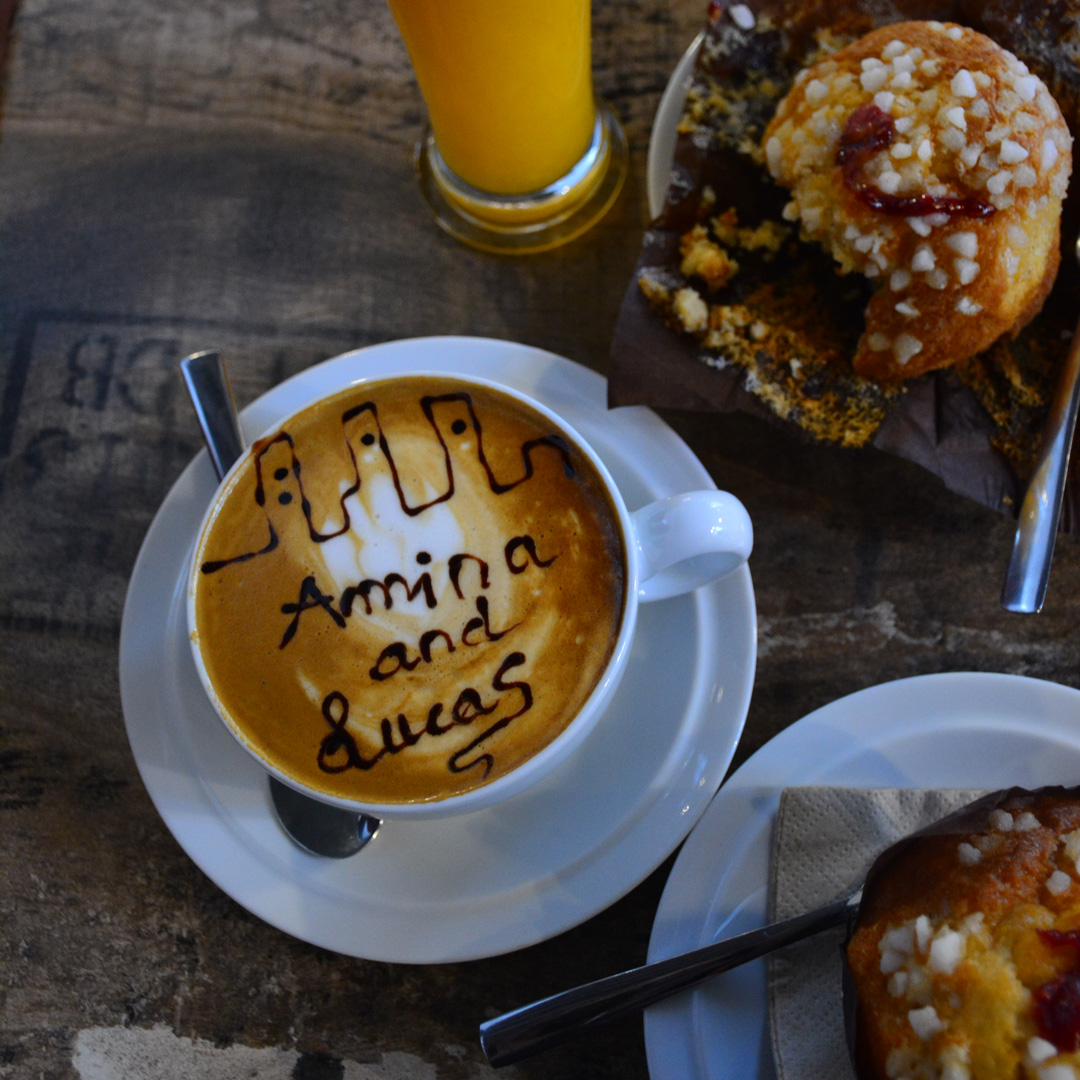The New European Coffee Culture
Most Europeans still begin their day with a shot of espresso and a croissant at the counter of their favorite neighborhood café before hustling off to work. Later in the morning, they’ll often take a longer coffee break with a friend, relax on the terrace if it’s sunny, and enjoy the company. Europe is still not a “coffee-to-go” culture.
Generally, there are four types of coffee served: espresso (hot water steamed through ground coffee), doppio (a double espresso), café creme or latte (espresso with steamed foamy, creamy milk), and americano (espresso with hot water). All of these are caffeinated. Decaf is essentially unheard of, and drip coffee is hardly commonplace. The Euro-sounding terms popularized by American coffee shops that refer to size (such as “grande” and “venti”) don’t mean anything except their literal Italian meanings in Europe: “big” and “twenty,” respectively. Instead, European cafés serve drinks according to the number of espresso shots desired (i.e. single cappuccino or double espresso).
It used to be the case that, whether you ordered an espresso or café au lait, a mostly-subpar cup was saved only by the view: a bustling city plaza, lively town square, or charming cobblestone alley. This common experience really became part of the zeitgeist after Oliver Strand published his 2010 article, Why is Coffee in Paris So Bad? Today, though the views are still charming and a bad cup o’ joe is still never that far away, the coffee culture is slowly changing.

Downhill from the awe-inspiring Alhambra palace, tucked along Carrera del Darro—one of the most picturesque streets in all of Granada—sits Duran Barista Coffee House. This café is something of a pilgrimage for coffee lovers across Europe. Though you won’t find a venti quad-shot-no-foam-extra-vanilla latte, you will find a range of organic coffees hand-picked by the owner, Antonio Durán (a veteran judge of international coffee competitions), and served with care. As you sip your café con leche, momentarily saddened to spoil the meticulously drawn Alhambra adorning the foam, you feel a large smile crease your face as you savor the creamy richness of a complex, earthy, sustainably-farmed coffee, noticing the cold-drip coffee maker in the window patiently brewing a cup for the next lucky customer.
This is the European Coffee Revolution, and it’s happening across the continent. The revolution itself is not surprising—the need for it has been clear for some time. What’s surprising is that it took so long! Europeans are accustomed to caring deeply about the values of food and drink. I mean, wine culture was born here! The same components that make for the perfect Bordeaux—the quality of soil, sunlight, varietals, and seasonal shifts in temperature—lend themselves to creating, discussing, and appreciating coffee. Europe’s coffee re-education process is in full swing.
Across the Seine from Île Saint Louis, nestled on the edge of Paris’s hip Marais district, is another coffee-lovers gem, La Caféothèque. Since 2005, this quaint coffee joint has been serving up single-origin roasts. The beans are roasted in-house, and the comforting smell of fresh-roasted goodness hangs in the air among the cozy, pillow-lined booths and chairs.
In Venice, coffee aficionados flock to Caffè del Doge, across from the Rialto Bridge, where they serve up grand crus and single-origins roasted in-house. As a bonus, a percentage of their sales go to helping under-privileged children in coffee-growing countries.
These are just a few of the wonderful, popular cafés that are serving up delicious brews in Europe. Importantly (and thankfully), this coffee “revolution” is all about the quality of the coffee itself, and not about the culture of how it is enjoyed.
These days, if you really do need that venti quad-shot-no-foam-with-extra-vanilla, a Starbucks is likely around the corner somewhere, and almost always surprisingly popular with the locals who, you might have guessed, spend more time sitting in the café chatting with their friends than hurrying out the door, coffee in hand.
So—wherever you’re ordering from—sit down, relax, chat with a friend, enjoy the view, and yes—enjoy your latte.
Updated from an original article by Sam Lugtu.